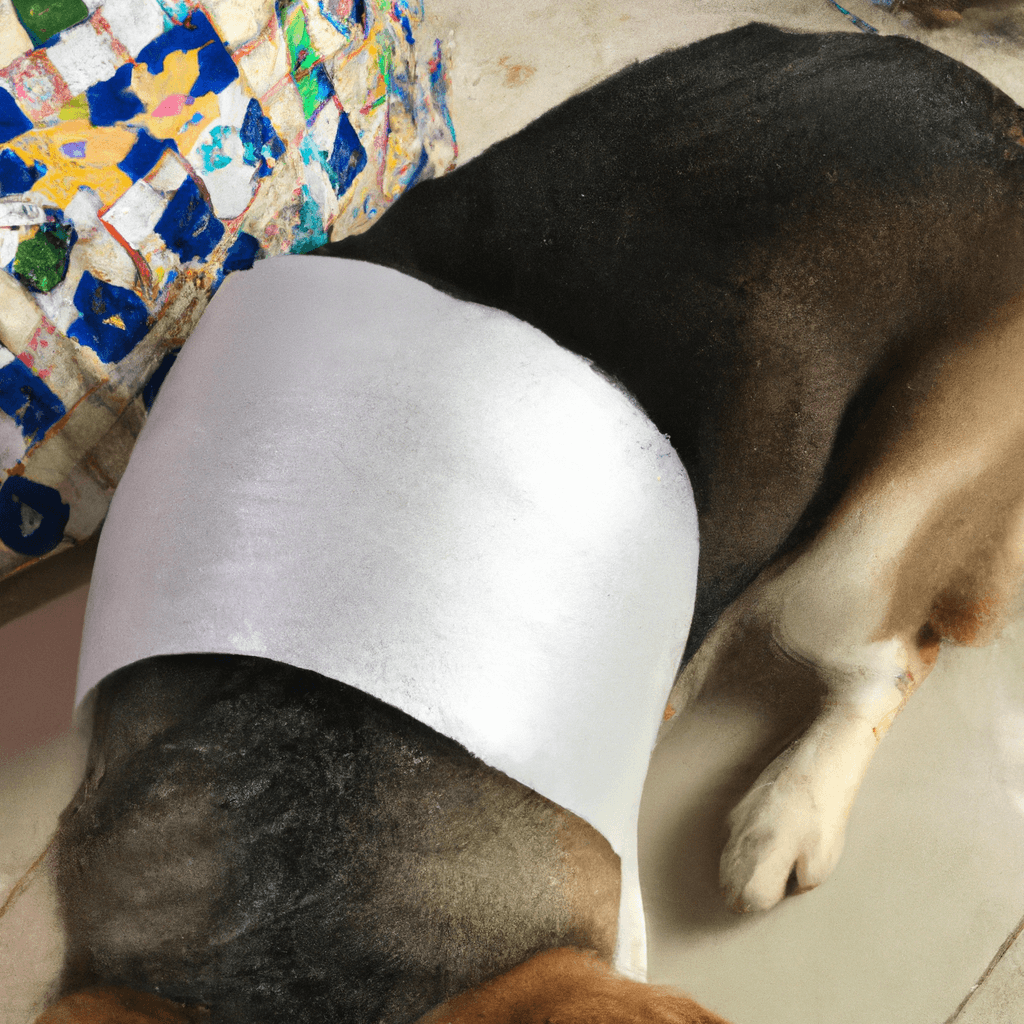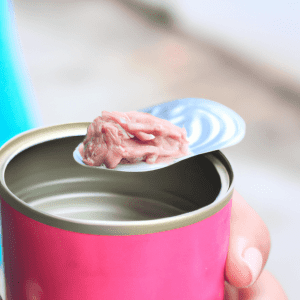Can dogs fake injuries? It is a valid question and one that has been debated amongst animal behaviorists and pet owners alike.
Dogs are known to be resilient and resourceful animals, and the idea that they could use their behaviors to manipulate us is intriguing.
This article will explore the evidence that suggests that dogs can, in fact, fake injuries, and discuss the implications of this behavior.
How to Recognize if Your Dog is Faking an Injury
If you’ve ever owned a dog, you know that sometimes they can seem to act like they’re hurt or in pain when they’re not. While this can be concerning, it’s important to know how to recognize if your pup is faking an injury. Here are some clues to look out for
- Your Dog is Always Lying Down – One of the most obvious signs that your pup is faking an injury is if they’re always lying down. This could be because they’re trying to avoid activities or just to get attention.
- They’re Still Active – If your pup is still able to go on walks and play with toys, it’s a good indication that they’re not really hurt. If they seem to be able to do all the same activities they did before, they’re likely just trying to get out of something.
- They Don’t Show Any Signs of Pain – If your pup is really hurt, they’re likely to show signs of pain, such as yelping or limping. If they don’t show any signs of pain, it’s likely that they’re just trying to get out of something.
- They Stop Acting Out When You Leave the Room – If your pup suddenly stops acting out or pretending to be hurt when you leave the room, it’s a good indication that they’re faking it.
- They’re Not Eating – If your pup isn’t eating or drinking as much as usual, it’s a good indication that they’re not really hurt. If you think your pup is faking an injury, it’s important to take them to the vet to make sure there isn’t a real medical issue.
However, if your vet confirms that there’s nothing wrong and your pup is just trying to avoid something, it might be time to address the underlying issue.
Canine Medical Myths: Is Faking an Injury One of Them?
No, faking an injury is not a canine medical myth. Unfortunately, it can and does happen. Faking an injury is when an animal pretends to be injured or in pain when they are not. It can be done for a variety of reasons, such as seeking attention, trying to get out of doing something, or because of fear or anxiety.
Signs that a dog may be faking an injury can include excessive vocalization, limping, or an inability to move when they are expected to.
Some dogs may also try to simulate an injury by purposely licking or biting at an area of their body. It’s important to be aware of these behaviors and to take your dog to the vet if you notice any of them. It’s important to remember that even if your dog is faking an injury, it is still a sign that something is wrong.
Faking an injury is often a sign of physical or psychological distress, and it should be taken seriously. If you think your dog is faking an injury, the best course of action is to take them to the vet for a thorough examination. The vet will be able to determine if there is an underlying medical condition causing the behavior.
In some cases, behavioral modification, such as positive reinforcement, can also help. Ultimately, it’s important to remember that faking an injury is not a canine medical myth. If you suspect that your dog is doing so, it’s important to take them to the vet for a thorough examination and to get to the bottom of the issue.
How to Tell if Your Dog is Faking an Injury to Get Attention
If you think your dog may be faking an injury to get attention, there are a few tell-tale signs you should look out for. First, pay attention to the timing of your pup’s injury. If your pup only seems to be hurt when you’ve been preoccupied with something else, such as work or chores, it could be a sign that they are faking it to get your attention.
Second, observe your pup’s behavior when they’re not hurt. If they seem to be more active than normal, it could mean they are exaggerating their injury. If your pup seems to be limping when you’re not looking, but then abruptly stops when you’re paying attention, that’s a definite sign that something is up.
Finally, look for inconsistencies in the way your pup reacts when they’re hurt. If they seem to be in pain one moment, but then act fine the next, it could be a sign that they are trying to get your attention.
If you think your pup is faking an injury, the best way to handle it is to ignore their behavior and give them attention when they are behaving normally. This will help reinforce the idea that attention is only given when they’re not trying to get it by faking an injury.
What Happens When Dogs Fake Injuries?
When dogs fake injuries, it can be a tricky situation to handle. Dogs can act like they’re hurt to get attention or to avoid doing something they don’t want to do. For example, if you ask your pup to go for a walk and they don’t want to go, they may suddenly start limping or crying out in pain.
The first thing you should do when you think your pup is faking an injury is to take them to the vet to make sure it’s not an actual injury. After that, you can use positive reinforcement to reward them for not engaging in this behavior.
For example, if your pup is faking an injury to avoid going for a walk, reward them with a treat when they willingly go for a walk. You should also ensure not to give in when your pup fakes an injury. Don’t pick them up, give them extra attention, or let them off the hook when they don’t want to do something.
This will only reinforce the behavior and make it more likely that they will keep doing it. Finally, it can be helpful to distract your pup when they start to show signs of faking an injury. Give them a toy to play with, or take them to a different location. This will help keep them from focusing on their ‘injury’ and hopefully stop them from faking it in the future.
Common Reasons Why Dogs Fake Injuries
Dogs are capable of some pretty sneaky behavior, including faking injuries. While it’s hard to tell what’s going on in their heads, there are some common reasons why dogs might fake an injury. First, they may be trying to get attention from their owners.
Dogs are incredibly loyal, so if they think that the only way to get your attention is to pretend to be hurt, they may take that route. Second, it could be a sign of separation anxiety. When left alone for long periods of time, dogs can become anxious and stressed, and may act out by faking an injury.
Third, it could be a sign of boredom. If your pup is stuck inside all day with nothing to do, they may start to get creative and invent their own ways to entertain themselves.
Finally, it could be a sign of a medical issue. If you suspect that your pup is faking an injury, you should take them to the vet to make sure there isn’t an underlying medical condition.
No matter the reason, it’s important to take your pup to the vet if they are displaying any signs of injury. While it can be tempting to ignore your pup’s behavior and hope it goes away, it’s always best to err on the side of caution and get them checked out.
What to Do if You Catch Your Dog Faking an Injury
If you catch your dog faking an injury, don’t be too hard on them – they may just be trying to get your attention or some extra love and treats! The best thing to do is to ignore the behavior.
If your pup is after some extra attention, they won’t get it by pretending to be hurt. It’s also important to make sure your pup is actually okay. Take a minute to examine them and make sure they haven’t actually hurt themselves accidentally. If they seem to be okay, then it’s probably just a little bit of acting.
If your pup continues to fake an injury, it could be a sign of a behavioral problem. This type of behavior is often a sign that they aren’t getting enough mental stimulation or exercise. Try to give your pup some extra games, training, and exercise to help keep them mentally and physically stimulated.
Finally, it’s important to pay attention to when and where your pup is faking an injury. If you can identify the triggers, it can help you figure out why they are doing it. For example, if your pup only fakes an injury when you come home from work, it could be a sign of separation anxiety.
Once you have determined the cause of your pup’s behavior, you can start to work on training and desensitizing them to it. With some patience and positive reinforcement, you should be able to help your pup break the habit of faking an injury.
How to Prevent Your Dog from Faking an Injury
If you’ve ever had a dog that seems to fake an injury, you know how frustrating it can be. It can be difficult to determine if the dog is actually hurt or just trying to get attention, and the behavior can be very hard to break. Fortunately, there are a few steps you can take to help prevent your dog from faking an injury.
First, make sure your dog is getting plenty of exercises. If your pup is feeling a bit cooped up, it may be more likely to act out. Take them for regular walks and make sure they get plenty of playtimes each day. Second, give your pup plenty of positive reinforcement.
If your dog does something you like, be sure to reward them with treats or verbal praise. This will help them learn good behaviors, and they’ll be less likely to resort to faking an injury. Third, avoid punishing your dog if they do fake an injury. This will only reinforce the behavior and make it more likely that they’ll do it again.
Instead, ignore the behavior and redirect your pup to something more positive. Finally, make sure your pup is getting the medical attention they need. If your pup seems to be in pain, take them to the vet to make sure there isn’t an underlying cause.
This will go a long way in preventing your pup from faking an injury. By following these tips, you should be able to prevent your pup from faking an injury. With a little patience and consistency, you can help your pup learn good behaviors and stay healthy and happy.
Tips on How to Avoid Unnecessary Vet Visits Due to Fake Injuries
- Be aware of changes in your pet’s behavior: Look out for any sudden behavioral changes in your pet, such as cowering, limping, or favoring one side over the other. These could be signs of an injury.
- Monitor the environment: Make sure your pet’s living environment is safe, with no sharp objects or other potential hazards. Unsupervised pets may be more likely to get injured.
- Use caution when playing with your pet: If you play rough with your pet, such as throwing a toy or playing tug-of-war, pay attention to signs of pain or discomfort.
- Make sure your pet is healthy: Give your pet regular check-ups and keep up with vaccinations and preventive care to ensure your pet is healthy and less likely to get injured.
- Talk to your vet: If you notice any new behaviors in your pet, it’s best to contact your vet. They may be able to provide advice or suggest a course of action.
Understanding Dog Behavior: How to Tell if Your Dog is Faking an Injury
Are you worried your pup may be faking an injury? It can be difficult to tell if your dog is really hurt or just trying to get out of doing something they don’t want to do. Here are some tips to help you understand your pup’s behavior and figure out if they’re really injured or just putting on a show.
- Check for Physical Cues: The first thing to do is to check for any physical signs of injury. Check for limping, favoring a limb, or signs of pain like whimpering or yelping. If you see any of these signs, it’s likely that your pup is actually injured.
- Look at Their Facial Expression: A dog’s facial expressions can say a lot about how they’re feeling. If your pup is faking an injury, it may look more relaxed and less anxious than usual.
- Observe Their Behavior: If your pup has been injured before, you may be able to tell if they’re faking an injury by looking for behaviors that are different from their usual behavior when they’re injured. For instance, if they’re usually very still and quiet when they’re hurt, but are suddenly very active and vocal, they may be trying to get out of doing something they don’t want to do.
- Take Them to the Vet: If you are still unsure if your pup is injured or not, it is always best to take them to the vet to be checked out.
This way you can make sure that your pup is healthy and can get the proper treatment if they are injured. By following these tips, you should be able to figure out if your pup is faking an injury or is truly hurt. Remember to always trust your gut and if you are still unsure, it is always better to be safe than sorry and take them to the vet.
1 The Psychology of Why Dogs Fake Injuries
Have you ever seen your pup limping around the house, only for them to be running and jumping around as if nothing had happened a few minutes later? If so, you may have witnessed your pup faking an injury.
Dogs fake injuries for a number of reasons, and understanding why they do this can help you to better understand and manage your pup’s behavior. One common reason why dogs fake injuries are to gain attention from their owners.
If your pup has been feeling ignored and is looking for a way to get your attention, they may start showing signs of pain or limping in order to gain your attention.
This behavior is often reinforced when the pup gets the attention they are looking for, so it’s important to pay attention to your pup’s behavior and make sure they are getting enough attention.
Another reason why dogs may fake injuries is to avoid uncomfortable situations. If your pup is feeling scared or anxious in a particular situation, it may start showing signs of pain or discomfort in order to get out of it. This could be anything from a scary thunderstorm to a visit from a stranger.
In these cases, it’s important to be aware of your pup’s behavior and provide them with a safe and comfortable environment. Finally, dogs may also fake injuries out of boredom or as a way to occupy themselves.
If your pup is feeling bored or understimulated, it may start showing signs of pain or discomfort in order to have something to do. This is why it’s important to make sure your pup has plenty of toys, exercise, and enrichment activities to keep them occupied.
Understanding the psychology behind why dogs fake injuries can help you to manage better and understand your pup’s behavior.
By making sure your pup is getting enough attention, providing them with a comfortable environment, and giving them plenty of activities to do, you can help to reduce the likelihood of your pup faking injuries.
In conclusion, while it is possible for dogs to act out fake injuries, it is not common behavior. Most dogs that appear to be in pain are likely in genuine discomfort due to an underlying health issue. If you suspect your dog may be faking an injury, it is important to take it to a veterinarian for a proper diagnosis.




